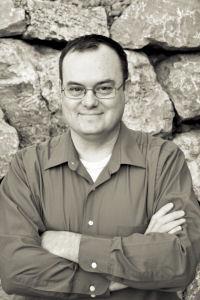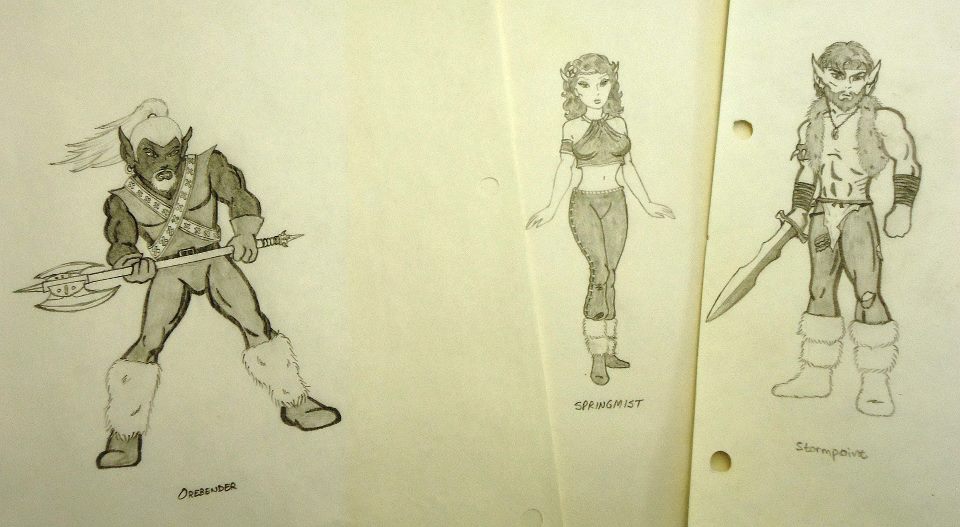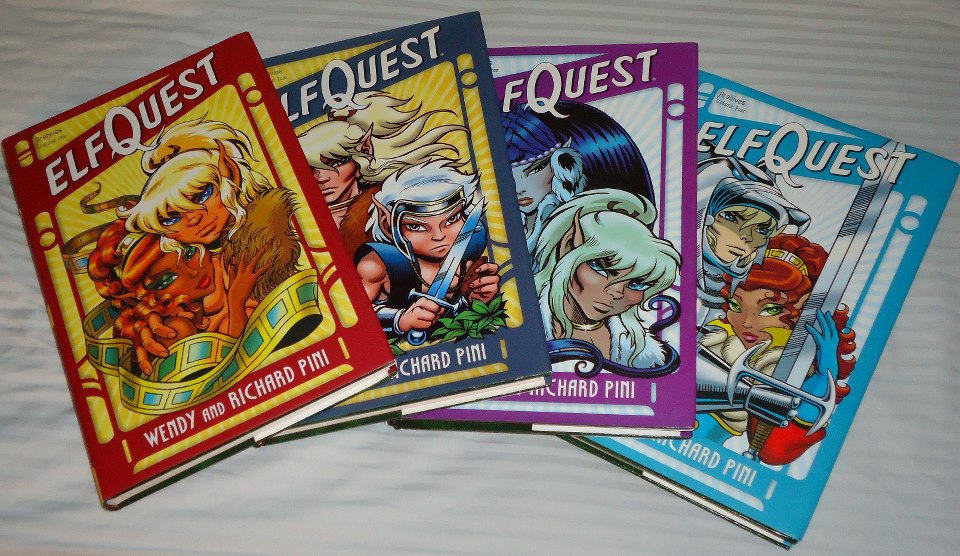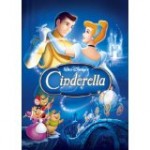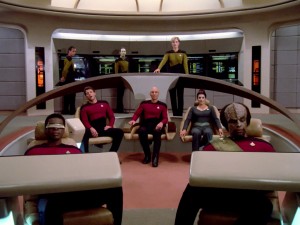 On a schoolyard in 1993, I made a new friend. His name was Joey, and he introduced me to Star Trek. Without seeing a single episode, I began to learn about the Starship Enterprise. It was like hearing the Gospel for the first time. I started by watching some of the Star Trek movies. I remember going with Joey to the local video store. While browsing the shelves, he explained to me those basic tenets of the Star Trek feature series that now seem as constant and self-evident as the lunar cycle, the length of day, and the colour of the sky-the odd movies are good, the even ones are bad. So we started with Star Trek II, which proved successful, if not completely a deal-sealer.
On a schoolyard in 1993, I made a new friend. His name was Joey, and he introduced me to Star Trek. Without seeing a single episode, I began to learn about the Starship Enterprise. It was like hearing the Gospel for the first time. I started by watching some of the Star Trek movies. I remember going with Joey to the local video store. While browsing the shelves, he explained to me those basic tenets of the Star Trek feature series that now seem as constant and self-evident as the lunar cycle, the length of day, and the colour of the sky-the odd movies are good, the even ones are bad. So we started with Star Trek II, which proved successful, if not completely a deal-sealer.
I was reluctant to share this interest with my family, because I had a sense that they would not endorse it. Little did I know that my mother had grown up watching Kirk and Spock on her family’s television-a piece of technology still mostly shunned in the 1960s by most people in the religious community where she grew up. Yes, my mother’s family was quite worldly, a fact which I am somewhat proud of.
My parents were tolerant of my interest in Star Trek, and so it was that I began catching episodes here and there on television. This was the early 1990s, of course, so the episodes I saw were reruns of Star Trek: The Next Generation-and I quickly grew to love it. There is one episode that sticks in my mind. I’m not a hundred percent certain it’s the first episode I saw, but it’s definitely the one that sealed the deal. It was called “Remember Me,” a fourth season episode featuring Dr. Crusher’s escape from a warp bubble. (I’m sure that sounds like Chinese to some, but it makes perfect sense to me.)
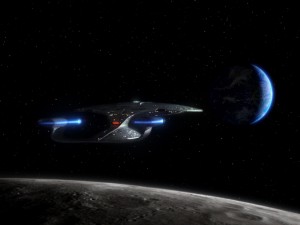 The result is that in 1995, at the age of twelve, I wrote a full-length novel. It was set in the Star Trek universe and it was called “Warring Factions.” Oh my goodness, it is a travesty of epic proportions. I say it’s set in the Star Trek universe, but I had the unmitigated gall to invent my own new ship, and a whole new crew. Eighteen years later, I have only the vaguest recollections of the plot, but I’ve been too embarrassed to actually read it (it even has an alien character named “Hamlit,” ugh). I may never read it. A year later, I wrote a follow-up called “Nightstalker.” This one mingled my invented crew with the cast of Star Trek: Voyager, a bizarre mashup which makes precisely zero sense.
The result is that in 1995, at the age of twelve, I wrote a full-length novel. It was set in the Star Trek universe and it was called “Warring Factions.” Oh my goodness, it is a travesty of epic proportions. I say it’s set in the Star Trek universe, but I had the unmitigated gall to invent my own new ship, and a whole new crew. Eighteen years later, I have only the vaguest recollections of the plot, but I’ve been too embarrassed to actually read it (it even has an alien character named “Hamlit,” ugh). I may never read it. A year later, I wrote a follow-up called “Nightstalker.” This one mingled my invented crew with the cast of Star Trek: Voyager, a bizarre mashup which makes precisely zero sense.
As terrible as those books are, within them are over 100,000 words, interspersed with correctly placed commas, period, and apostrophes (also a fair share of incorrectly placed semicolons). These books gave me a powerful head start, and I doubt any of it would have happened without Star Trek.
Ever since, my progression into the world of genre publishing has been characterized by an attempt to eradicate Star Trek tropes from my writing-not that they’re bad, but because they’re so very distinctive. Remember what I said about the warp bubble? Well, in my early fiction I had a tendency to write about the positronic reconfiguration of the neutrino assembly, or the baryon- particle causation effect in the warp field capacitor. Trekkers affectionately refer to this as technobabble.
But there are a lot of things that Star Trek did right, lessons it taught me and which have served me well over the years. For one thing, Star Trek, at its best, did a good job of balancing sci-fi premises with compelling character drama. After all, just about every form of fiction, whatever genre it falls into, must have a strong character component. Star Trek also taught me about immersing the story and the characters in the setting, and finding ways to actively integrate and bring to life the environment in which a story takes place.
Star Trek was powerfully inspirational to me, in more ways than I can count. It’s something I return to constantly, and it always gives me a creative boost.
Ultimately, Star Trek imbued me with an appreciation of style and setting, but when it comes to story and structure… well, that’s a post for another day. May 27, to be exact. I’ll see you then!

